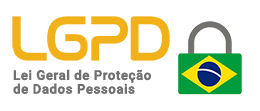Law creates national drug control system
Author: Ascom / Anvisa Press Office
Source: 16/01/2009

Data from the Ministry of Justice show that the pharmaceutical sector generates 10 billion dollars a year. However, in 2008 alone, the National Health Surveillance Agency (Anvisa) seized about 130 tons of unregistered, smuggled and counterfeited products on the market.
These figures show the need to continuously improve mechanisms for the traceability and authenticity of medicines in the country. With this objective, on Thursday (15), the Civil House published, in the Official Gazette (DOU), Law 11.903, which creates the National Drug Control System.
The system will monitor all drugs produced, dispensed and sold in Brazil. The new standard provides for the monitoring of the drug, throughout the production chain, from manufacturing to consumption by the population.
According to the law, the control must be carried out by means of an identification system, using technologies for the capture, storage and electronic transmission of data. Implementation will take place over a gradual period of three years.
"In addition to information regarding the lot and the expiration date, the system will make the unique identification of each medicine box, functioning as an RG for the product", details Anvisa's acting CEO, Dirceu Barbano.
The director emphasizes the importance of the Law for the country. "Within three years, when the system is fully implemented, drug control in Brazil will reach levels of excellence, guaranteeing, in addition to traceability, effective monitoring of the use and prescription of these products". He adds that the improvements introduced should not imply an increase in the cost of the drug to the consumer.
History
The creation of more effective mechanisms for drug tracking is an integral part of the National Plan for Preventing and Combating Drug Counterfeiting by Anvisa and the Ministry of Health.
Monitoring of medicines for human use in the country has shown significant advances in recent years. In 2002, Ordinance 802/98 was published, which instituted the Control and Inspection System, for the entire pharmaceutical products chain.
The popular “scratch card” (reactive paint that assists in
authenticity of medicines), the inviolability of packaging and the
identification of the batch number in commercial transactions are some of the
innovations that the standard brought.
Also in 2002, Resolution RDC nº. 320
determined that the pharmaceutical distributors started to carry out
commercial transactions and circulation operations through invoices that
contain the product's batch number.
The National Controlled Product Management System (SNGPC) was
instituted by Anvisa in 2007. Pharmacies and drugstores that do not require
controlled drugs must adhere to the new solution, which captures data from across the
cycle of this type of products.
“SNGPC captures essential data related to prescription and prescription
dispensing medications and controlled substances. However, the
need to include the batch number of each unit dispensed in the system
causes some operational difficulties, and can generate some failures, such as
typos, for example ”, explains the substitute manager responsible for
monitoring the quality of Anvisa medicines and products, Tiago Rauber.
To fill the gap in the traceability mechanisms of
medicines commercialized in the country and to identify solutions
implementation, Anvisa launched Public Consultation no. 8, 2008, which received
contributions for 60 days.
The result of the discussion was presented to
Anvisa's Collegiate Board (Dicol). The presentation included different
alternative systems available on the market to guarantee authenticity and
drug traceability.
According to Dicol's decision, the
final definition of the system model to be implemented and its respective
technology will depend on technical and economic feasibility analyzes that will be
carried out through pilot studies later this year.
Information: Ascom / Anvisa Press Office



